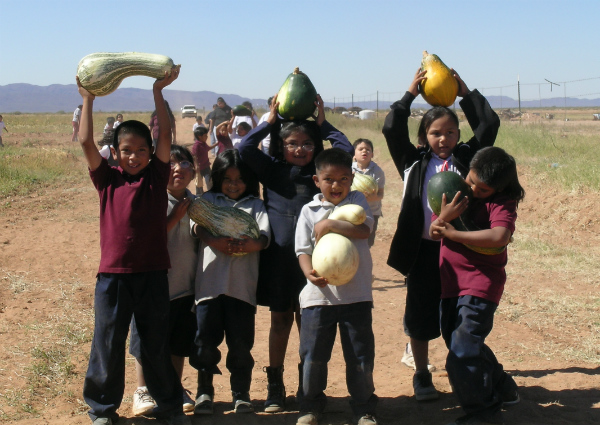65 Free Farm to School Recipes From The Chef Ann Foundation

Guest post by Sarah Flinn, Marketing Manager, Chef Ann Foundation
Chef Ann Cooper has been reforming school food for almost 20 years, and when recently asked what she’d do if she had a magic wand, her response was quick and to the point:
1. We need to feed kids—all kids should have access to healthy food at school every day.
2. We need to teach kids food literacy.
“What is it that we do numerous times a day from the day we’re born to the day we die? It’s eat. It’s not trigonometry. But what do we test students on? We have to teach kids about healthy food and where it comes from.”
Why Farm to School?
We know that one of the best ways to teach kids about their food is to show them where it comes from. Through farm to school activities we aim to connect kids to local farms, farmers and food, and to let them see, smell and touch the fresh produce. But above all else, they need to taste it.
It’s great when schools have activities to teach kids about local produce, but we’ve found that those learning experiences in the lunchroom are even more impactful when the students later see those same ingredients incorporated into their school meals.
Free Farm to School Recipes

For many schools, a barrier to serving local food is a lack of recipes that utilize farm-fresh ingredients. That’s why we’re so excited to provide 65 new Farm to School recipes on The Lunch Box! Not only do these recipes credit towards the USDA meal pattern, they’ve also been created and tested in a school kitchen, and are taste-taste approved by students.
The recipes on The Lunch Box are consistently the most utilized resources that the Chef Ann Foundation provides to schools and we’re not surprised why:
- All of our recipes (there are over 300 of them) are free for anyone to download at any time.
- The recipes can be scaled for any number of servings, taking the guesswork out of purchasing.
- Each recipe also includes the full cost analysis for your specific school or district’s size in addition to the cost per serving—making it easier to plan your budget while incorporating these new recipes into your menu cycle.
Bringing Farm to School to Pre-K
For the schools that are serving lunch to our youngest kids, the pre-kindergarteners, recipes have been even harder to come by, but our farm to school recipes are among the first recipes that credit towards the new Child and Adult Care Food Program (CACFP) that go into effect this fall. We’ve also put together a complete 6-week menu cycle for Pre-K (and all other grade levels).
Removing the Barriers to Scratch-Cooking
When you get down to the root of everything that we do at the Chef Ann Foundation, it all leads back to helping as many schools as possible serve healthy, scratch-cooked food to all of our students, regardless of their age or family’s income. When we can help schools with the recipes they need to do that and encourage schools to use their buying power to boost their local economy and decrease their carbon footprint at the same time, everyone wins.
One last thing, did we mention that these meals are really delicious? Doesn’t Chicken Piccata, Tuna with Lemon and Dill, or a Black Bean Empanada sound more appealing than a frozen burrito or chicken nuggets? You can find all of the new farm to school recipes for free here.












